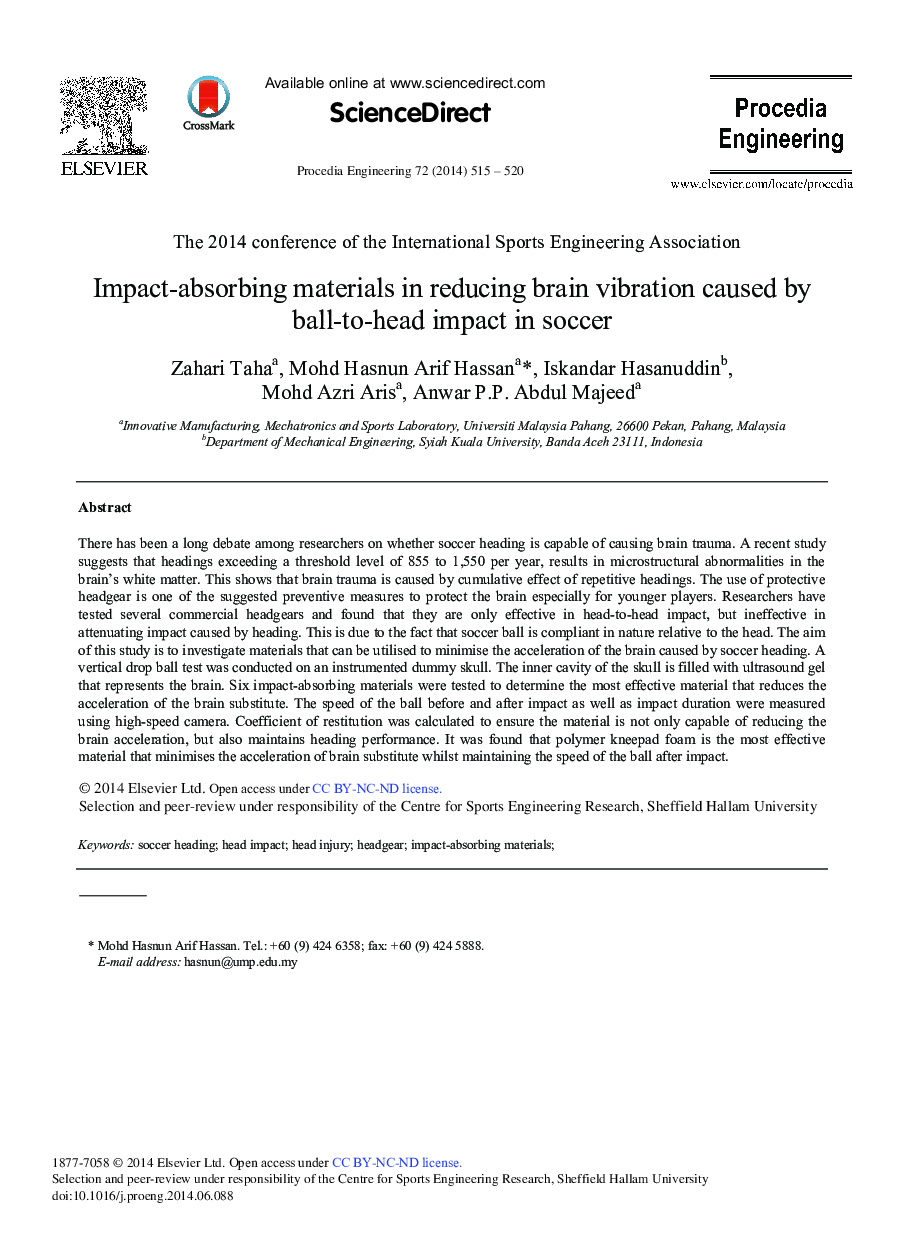| کد مقاله | کد نشریه | سال انتشار | مقاله انگلیسی | نسخه تمام متن |
|---|---|---|---|---|
| 859002 | 1470754 | 2014 | 6 صفحه PDF | دانلود رایگان |
There has been a long debate among researchers on whether soccer heading is capable of causing brain trauma. A recent study suggests that headings exceeding a threshold level of 855 to 1,550 per year, results in microstructural abnormalities in the brain's white matter. This shows that brain trauma is caused by cumulative effect of repetitive headings. The use of protective headgear is one of the suggested preventive measures to protect the brain especially for younger players. Researchers have tested several commercial headgears and found that they are only effective in head-to-head impact, but ineffective in attenuating impact caused by heading. This is due to the fact that soccer ball is compliant in nature relative to the head. The aim of this study is to investigate materials that can be utilised to minimise the acceleration of the brain caused by soccer heading. A vertical drop ball test was conducted on an instrumented dummy skull. The inner cavity of the skull is filled with ultrasound gel that represents the brain. Six impact-absorbing materials were tested to determine the most effective material that reduces the acceleration of the brain substitute. The speed of the ball before and after impact as well as impact duration were measured using high-speed camera. Coefficient of restitution was calculated to ensure the material is not only capable of reducing the brain acceleration, but also maintains heading performance. It was found that polymer kneepad foam is the most effective material that minimises the acceleration of brain substitute whilst maintaining the speed of the ball after impact.
Journal: Procedia Engineering - Volume 72, 2014, Pages 515-520
